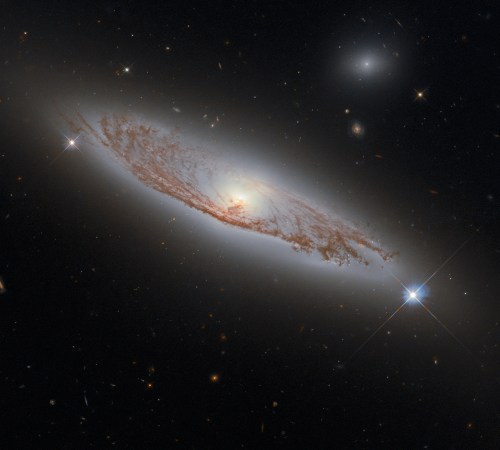
This week’s treat from the Hubble Space Telescope is an image of the spiral galaxy NGC 5037, located around 150 million light-years away. The swirls of dust and gas twirling around the galactic center form a dramatic picture, making the galaxy stand out against the blackness of the space beyond. Although the galaxy does have a very bright central region, called an active galactic nucleus, most of the light coming from this area is obscured by the dust which surrounds it.
This galaxy is a part of the Virgo Cluster, a group of galaxies in the Virgo constellation. There are up to 2,000 galaxies in this cluster, including the famous Messier 87 galaxy from which the historical first image of a black hole was taken. Astronomers have ways of grouping galaxies to organize them, with the cluster being one such grouping. Above the cluster is a group called a supercluster — the Virgo Supercluster contains 100 galaxy groups including both the Virgo Cluster and the Local Group. The Local Group is the group our Milky Way galaxy resides in, along with its satellite galaxies and the Andromeda galaxy.
To see all the way to the NGC 5037 galaxy, Hubble used its Wide Field Camera 3 (WFC3) — the instrument used to acquire many of the telescope’s most famous images. “WFC3 is a very versatile camera, as it can collect ultraviolet, visible, and infrared light, thereby providing a wealth of information about the objects that it observes,” the Hubble scientists write.
“WFC3 was installed on Hubble by astronauts in 2009, during servicing mission 4, which was Hubble’s fifth and final servicing mission. Servicing mission 4 was intended to prolong Hubble’s life for another five years. 12 years later, both Hubble and WFC3 remain in active use!”
Editors' Recommendations
- Celebrate Hubble’s 34th birthday with this gorgeous nebula image
- Hubble spots a bright galaxy peering out from behind a dark nebula
- Hubble captures the dramatic jets of a baby star
- See what James Webb and Hubble are observing right now with this tool
- Hubble spots a massive star forming amid clouds of dust and gas